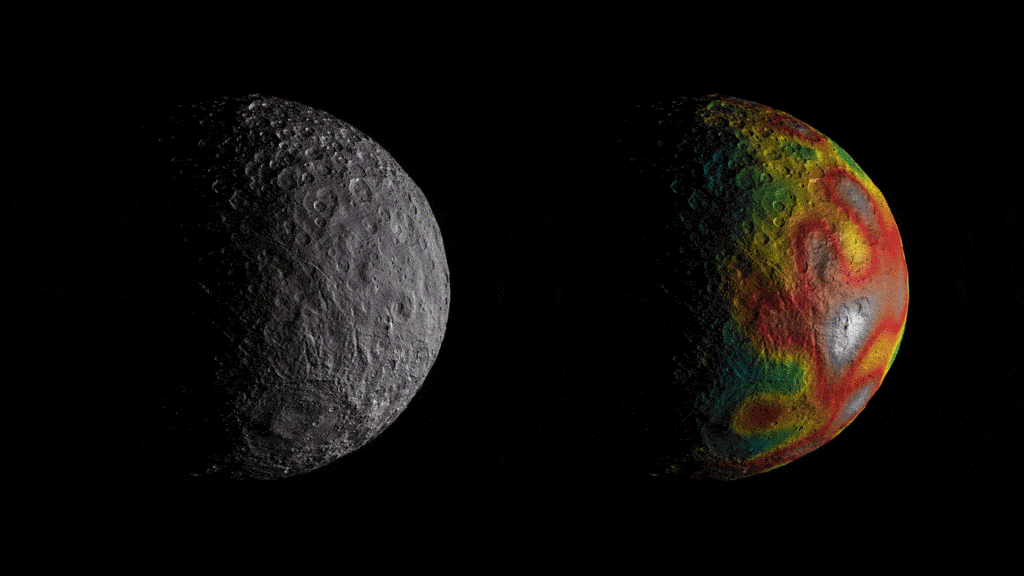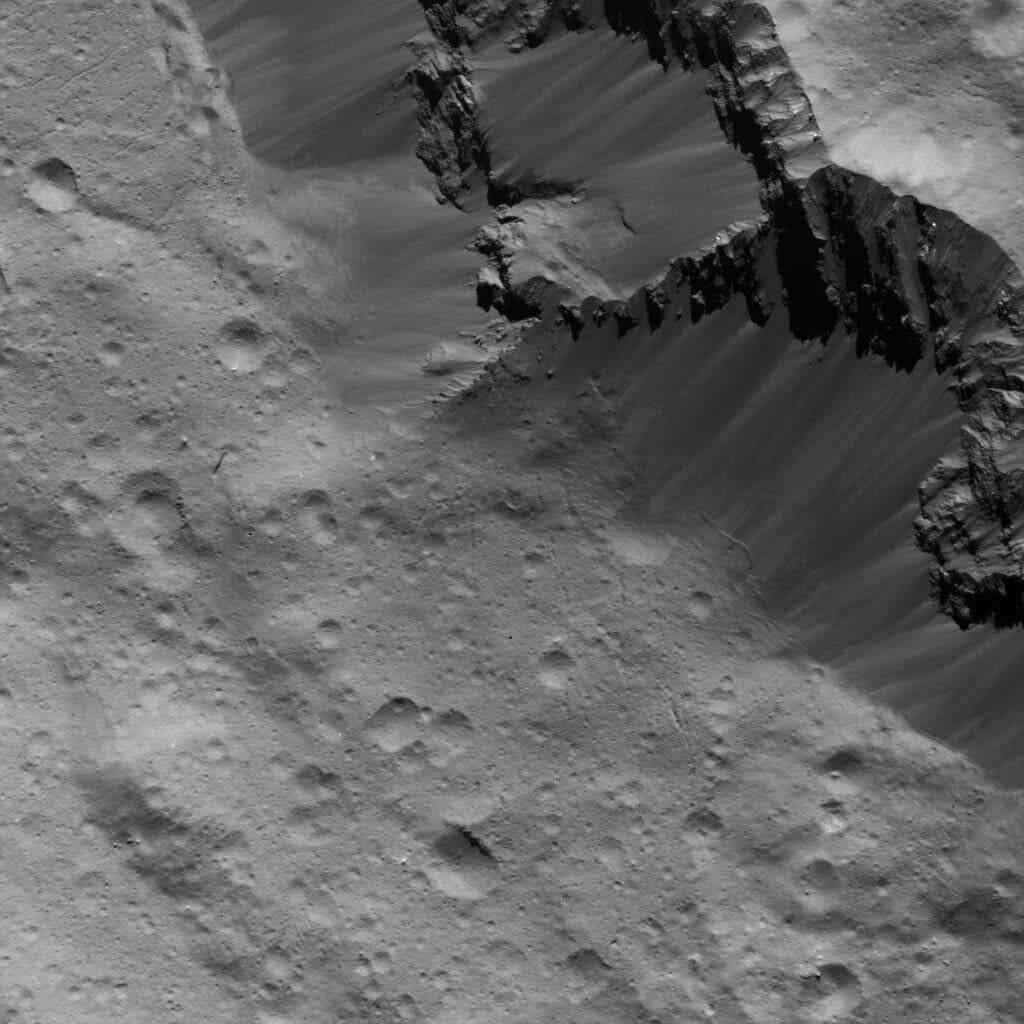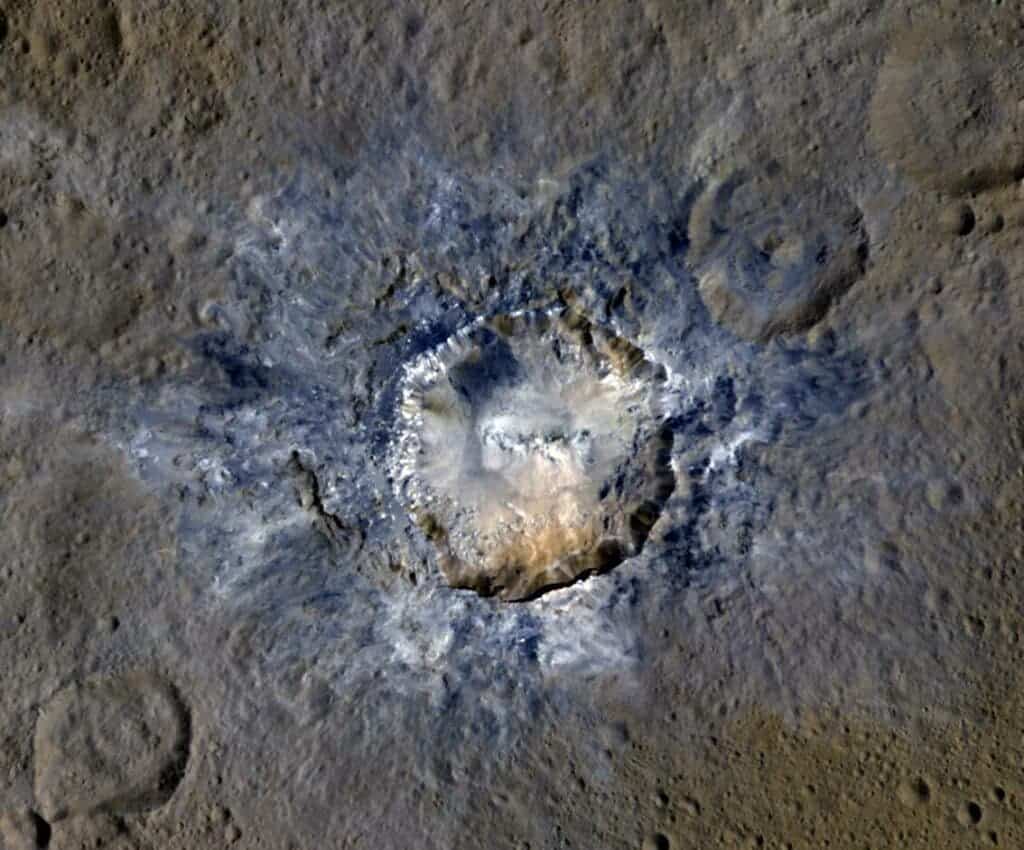Astronomers have called Ceres many things: the largest object in the asteroid belt; a dwarf planet; a cold, barren rock. But ‘ocean world’ is not something they would have even considered — until very recently.

Ceres lies within the asteroid belt between Mars and Jupiter. First considered to be a planet in the 19th century, it is now known to be an asteroid, and classed as a dwarf planet, like Pluto.
Now, a flurry of studies forces us to rethink Ceres once again, as astronomers report evidence indicative of a salty ocean beneath its surface.
We can now say that Ceres is a sort of ocean world, as are some of Saturn’s and Jupiter’s moons,” Maria Cristina De Sanctis, from Rome’s Istituto Nazionale di Astrofisica and one of the study authors, told AFP.
De Sanctis and colleagues analyzed images sent from NASA’s robotic Dawn spacecraft, which entered orbit around Ceres in 2015. As Dawn approached Ceres, it offered an unprecedented glimpse into the planetoid, showing impact craters and signs of cryovolcanic activity (volcanism that erupts frozen water, ammonia, or methane, instead of molten rock). Now, researchers also analyzed infrared images, which showed the presence of a rock called hydrohalite.

As the name implies (hydro=water, halite=rock salt), hydrohalite is a mineral that forms in salty waters and has until now only been observed on Earth. The deposit seems to have built up during the last two million years, which is extremely recent in geologic history, suggesting that the processes behind it are still very much active. In other words, it seems that brine is still ascending from the planet’s interior, a “smoking gun” for liquid water.
“That material is unstable on Ceres’ surface, and hence must have been emplaced very recently,” said co-authors Julie Castillo-Rogez, from the California Institute of Technology’s Jet Propulsion Laboratory.
Another published paper found evidence of cryovolcanism that started around 9 million years ago and lasted for several million years, also indicative of a deep brine source. Gravity data and thermal modeling also imply an extensive deep brine reservoir beneath the Ceresian surface.

In a separate paper, researchers used remote sensing to analyze the crust of Ceres, finding evidence of density and rheological variations, which are also consistent with a liquid ocean under the surface. Whether or not this is still an active ocean or just a remnant of one is unclear.
This finding could have massive implication for the field of astrobiology. Not only does Ceres (a seemingly dull object in the asteroid belt) feature liquid water beneath its surface, shielded from radiation — but it also features salt.
According to De Sanctis, the ingredients of life seem to be lining up nicely on Ceres.
“The material found on Ceres is extremely important in terms of astrobiology,” she said.
“We know that these minerals are all essential for the emergence of life.”
Journal References:
- C. A. Raymond et al. Impact-driven mobilization of deep crustal brines on dwarf planet Ceres, Nature Astronomy (2020). DOI: 10.1038/s41550-020-1168-2
- A. Nathues et al. Recent cryovolcanic activity at Occator crater on Ceres, Nature Astronomy (2020). DOI: 10.1038/s41550-020-1146-8
- R. S. Park et al. Evidence of non-uniform crust of Ceres from Dawn’s high-resolution gravity data, Nature Astronomy (2020). DOI: 10.1038/s41550-020-1019-1
- M. C. De Sanctis et al. Fresh emplacement of hydrated sodium chloride on Ceres from ascending salty fluids, Nature Astronomy (2020). DOI: 10.1038/s41550-020-1138-8
- B. E. Schmidt et al. Post-impact cryo-hydrologic formation of small mounds and hills in Ceres’s Occator crater, Nature Geoscience (2020). DOI: 10.1038/s41561-020-0581-6






